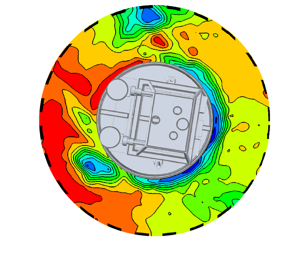Project Description
Scouring assessments for subsea structures are usually conducted using methodologies and assumptions established for surface piercing structures (e.g. bridge piers). Most of these methods are also based on small scale laboratory experiments which model idealised flow conditions and seabed sediments. The application of these methods to subsea structures in the field therefore leads to some inevitable uncertainties. This existing gap in practice is exacerbated by a lack of reliable field data to benchmark the respective methodologies and assumptions.
This projects aims to execute a ‘seed’ project whereby high quality field observations of scour around a subsea structure will be back-analysed to demonstrate that with the right technology / approach, we can effectively predict scour and therefore address scour related challenges. The technology and approach utilised in this case will be carefully constructed model scale experiments which aim to mimic field conditions, and account for actual structural geometry (using 3D printing) and site specific sediment and metocean conditions.
Results from this project have been presented at two conferences (Australian Oil and Gas 2019 and the First Vietnam Symposium of Advances in Offshore Structures 2018) and a journal publication is in preparation. The results have also led to discussions concerning a wider industry research project, which would have an ultimate aim of developing improved design guidelines for scour assessment of subsea structures.


